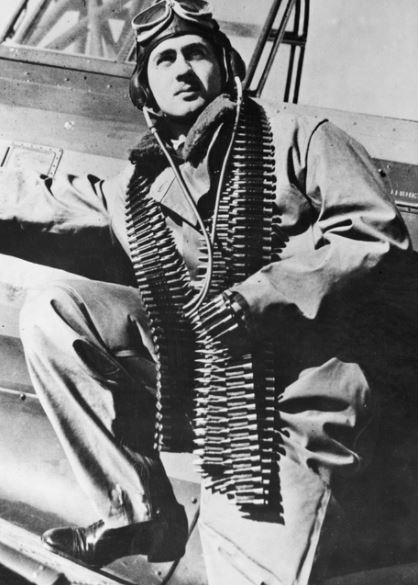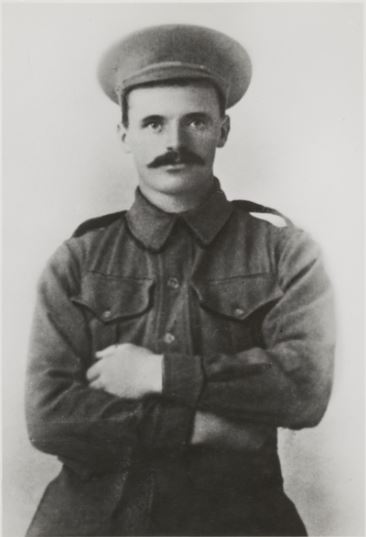Flight Lieutenant William (Bill) Ellis Newton VC (1919 - 1943, 23yo)
 William Ellis Newton was born on 8 June 1919 in the Melbourne suburb of St Kilda. After completing his education, he worked at a silk warehouse operated by Makower before joining the Royal Australian Air Force on 5 February 1940. He earned his pilot qualification in June and, after a period as a flying instructor, was assigned to No. 22 Squadron at Port Moresby.
William Ellis Newton was born on 8 June 1919 in the Melbourne suburb of St Kilda. After completing his education, he worked at a silk warehouse operated by Makower before joining the Royal Australian Air Force on 5 February 1940. He earned his pilot qualification in June and, after a period as a flying instructor, was assigned to No. 22 Squadron at Port Moresby.
Newton quickly developed a reputation as a fearless pilot. Over the course of 52 combat missions, he led repeated low-level attacks against enemy positions, often braving intense anti-aircraft fire to strike his targets. His leadership and courage became legendary within the squadron, particularly for his refusal to deviate from attack runs, regardless of the threat.
On several occasions, he flew through heavy fire to bomb strategic sites on the Salamaua Isthmus. On one mission, his aircraft suffered an engine failure over the target, yet he managed to return 160 miles to base. On 16 March 1943, Newton again led a bombing raid on the Isthmus, pressing home the attack despite his aircraft being hit multiple times. He succeeded in destroying fuel stores and infrastructure before returning to base with a heavily damaged plane.
The next day, he returned to the same target area. After scoring another successful strike, his aircraft was set alight by enemy fire. Newton maintained control and guided the burning bomber away from Japanese positions, crash-landing it in the sea. He and another crew member survived and made it to shore, only to be captured by Japanese forces.
Newton endured eleven days of interrogation before he was executed by beheading on 29 March 1943. Confirmation of his fate came later, when a Japanese diary found on a fallen soldier described the execution of an Allied airman captured on 18 March. The details left no doubt that the account referred to Newton.
He was posthumously awarded the Victoria Cross for his actions in March 1943. His courage, composure, and loyalty to his men marked him as one of Australia’s most valiant wartime aviators. After the war, his remains were recovered and buried with honour at Lae War Cemetery.
Sergeant Martin O'Meara VC (1885 - 1935, 50yo)

Martin O'Meara was born on 6 November 1885 in Tipperary, Ireland. As a young man, he emigrated to Australia where he worked as a sleeper-hewer in the timber industry. On 19 August 1915, he enlisted in the Australian Imperial Force and joined the 12th Reinforcements for the 16th Battalion. He departed Australia in December that year.
Following training in Egypt, O'Meara deployed to the Western Front in 1916. During the intense fighting near Pozières in August, his battalion was ordered to attack German positions at Mouquet Farm. Between 9 and 12 August, under withering artillery fire, O'Meara served as a stretcher-bearer, repeatedly venturing into no man's land to rescue the wounded. His actions, described by one officer as the bravest he had witnessed, resulted in the saving of over 25 lives. In addition to rescuing the wounded, O'Meara also carried forward supplies of ammunition, grenades, and rations under extreme conditions. For his exceptional bravery, he was awarded the Victoria Cross.
O'Meara remained with the 16th Battalion for the duration of the war, rising to the rank of Sergeant and sustaining wounds on three separate occasions. He returned to Australia in November 1918 and was discharged from service a year later.
The toll of war left lasting scars. Suffering from severe psychological trauma, O'Meara spent the rest of his life in institutional care. He died on 20 December 1935 in the Claremont Mental Hospital, Perth. His occupation was listed simply as "returned soldier." He was buried with full military honours in the Karrakatta Catholic cemetery, his funeral attended by fellow Victoria Cross recipients Clifford Sadlier, James Woods, and Thomas Axford.
O'Meara's courage on the battlefield stands in stark contrast to the private suffering he endured after the war, a reminder of the enduring impact of combat on the human spirit.
Last Reviewed 06/2025









